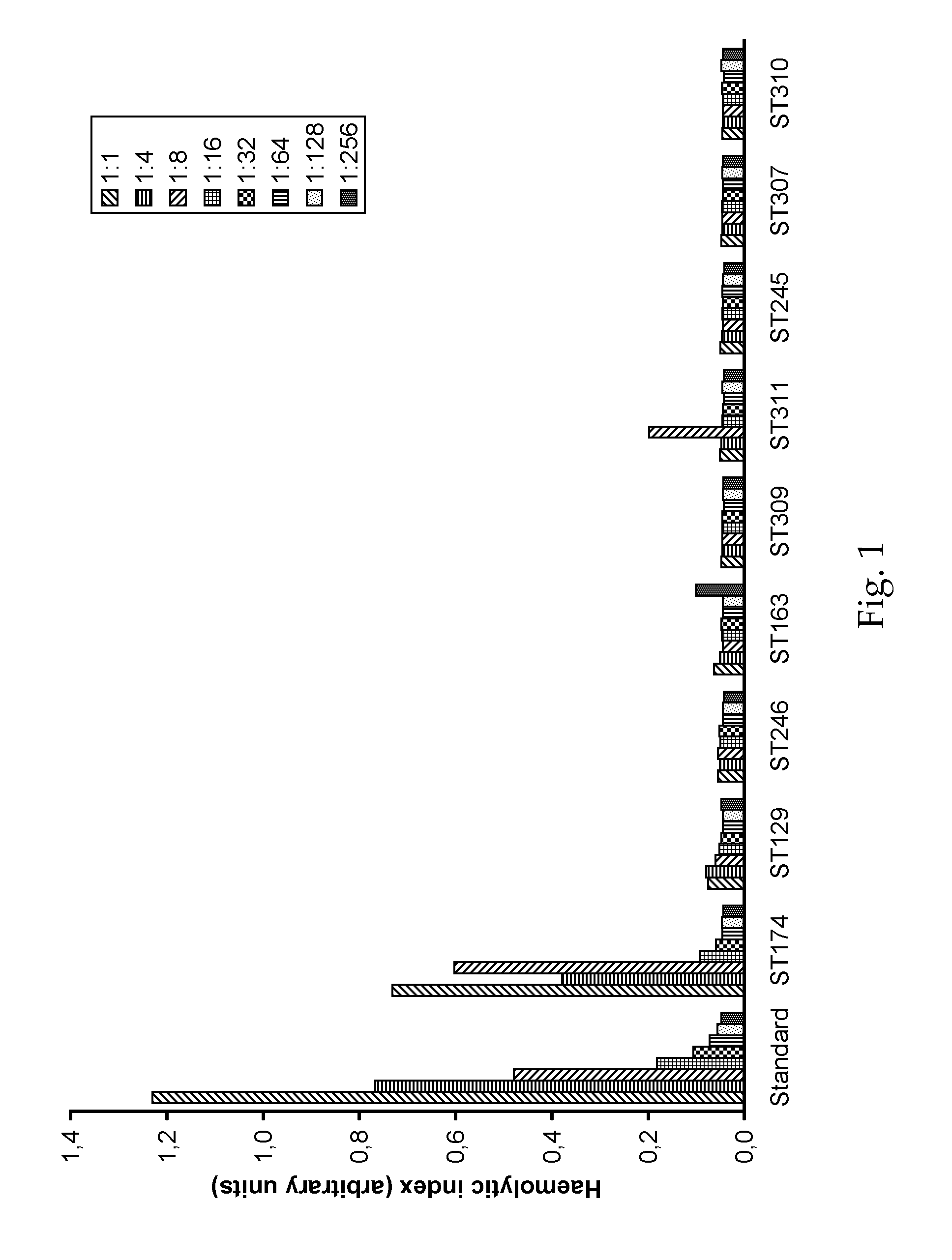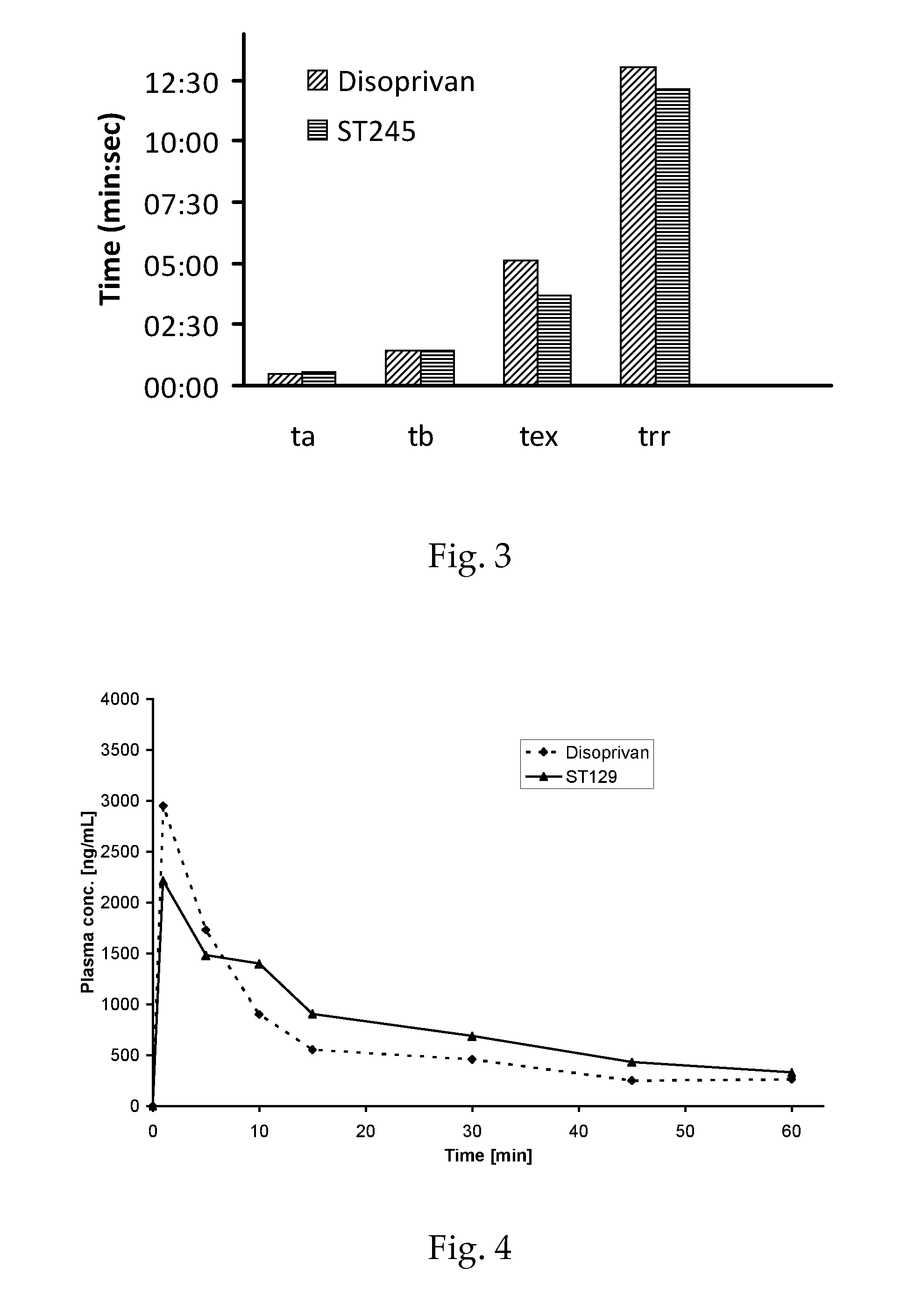O/w-emulsions comprising semifluorinated alkanes
a technology of semifluorinated alkanes and emulsions, applied in the field of dermatology, can solve the problems of difficult formulation of propofol, unsuitable for forming water soluble salts, and not easy to tolera
- Summary
- Abstract
- Description
- Claims
- Application Information
AI Technical Summary
Benefits of technology
Problems solved by technology
Method used
Image
Examples
example 1
[0073]10 g of propofol were dissolved in 10 g of F6H8. This mixture was added to a solution of 800 mg S75 (soy bean lecithin, Lipoid AG) in 979.2 g of aqueous dextrose solution (5 wt.-%) in water and stirred for 1 h at 2000 rpm. The emulsion was then prepared by high pressure homogenization process using an Avestin C3 apparatus at a pressure of 1100 bar in continuous process for 1 hour. The pH value was adjusted to pH 7,3-7,5 by adding sodium hydroxide solution. The final emulsion was filled into vials, closed and sealed after blanketing with nitrogen. Subsequently, the vials were sterilised at 121° C. for 10 minutes.
[0074]The average droplet size was 212 nm. Surprisingly, during the first 6 month of storage at 23° C., the mean droplet size showed no significant increase. From this batch, 20 vials was tested according to Ph. Eur. 6 and found to be sterile.
example 2
[0075]0.1 g propofol was dissolved in 0.1 g of F6H8. This mixture was added to a solution of 16 mg of S75 in 9.784 g of dextrose solution (5 wt.-%) in water and stirred for 1 h at 2000 rpm. The emulsion was formed by ultrasonicating the pre-emulsion for 240 s (1 s pulse, 1 s break) at 100% amplitude (Hilcher sonifier, ¼ inch tip) under ice-cooling. The pH value was adjusted to pH 7.3-7.5 by adding sodium hydroxide solution. The final emulsion was filled into vials, closed and sealed after blanketing with nitrogen. Subsequently, the vials were sterilised at 121° C. for 10 minutes.
example 3
[0076]In essentially the same manner as in example 2, a sterilised emulsion was prepared from 0.1 g of propofol, 0.5 g of F6H8, and a solution of 80 mg of S75 in 9.72 g of dextrose solution (5 wt.-%).
PUM
| Property | Measurement | Unit |
|---|---|---|
| droplet size | aaaaa | aaaaa |
| temperature | aaaaa | aaaaa |
| octanol/water partition coefficient | aaaaa | aaaaa |
Abstract
Description
Claims
Application Information
 Login to View More
Login to View More - R&D
- Intellectual Property
- Life Sciences
- Materials
- Tech Scout
- Unparalleled Data Quality
- Higher Quality Content
- 60% Fewer Hallucinations
Browse by: Latest US Patents, China's latest patents, Technical Efficacy Thesaurus, Application Domain, Technology Topic, Popular Technical Reports.
© 2025 PatSnap. All rights reserved.Legal|Privacy policy|Modern Slavery Act Transparency Statement|Sitemap|About US| Contact US: help@patsnap.com



